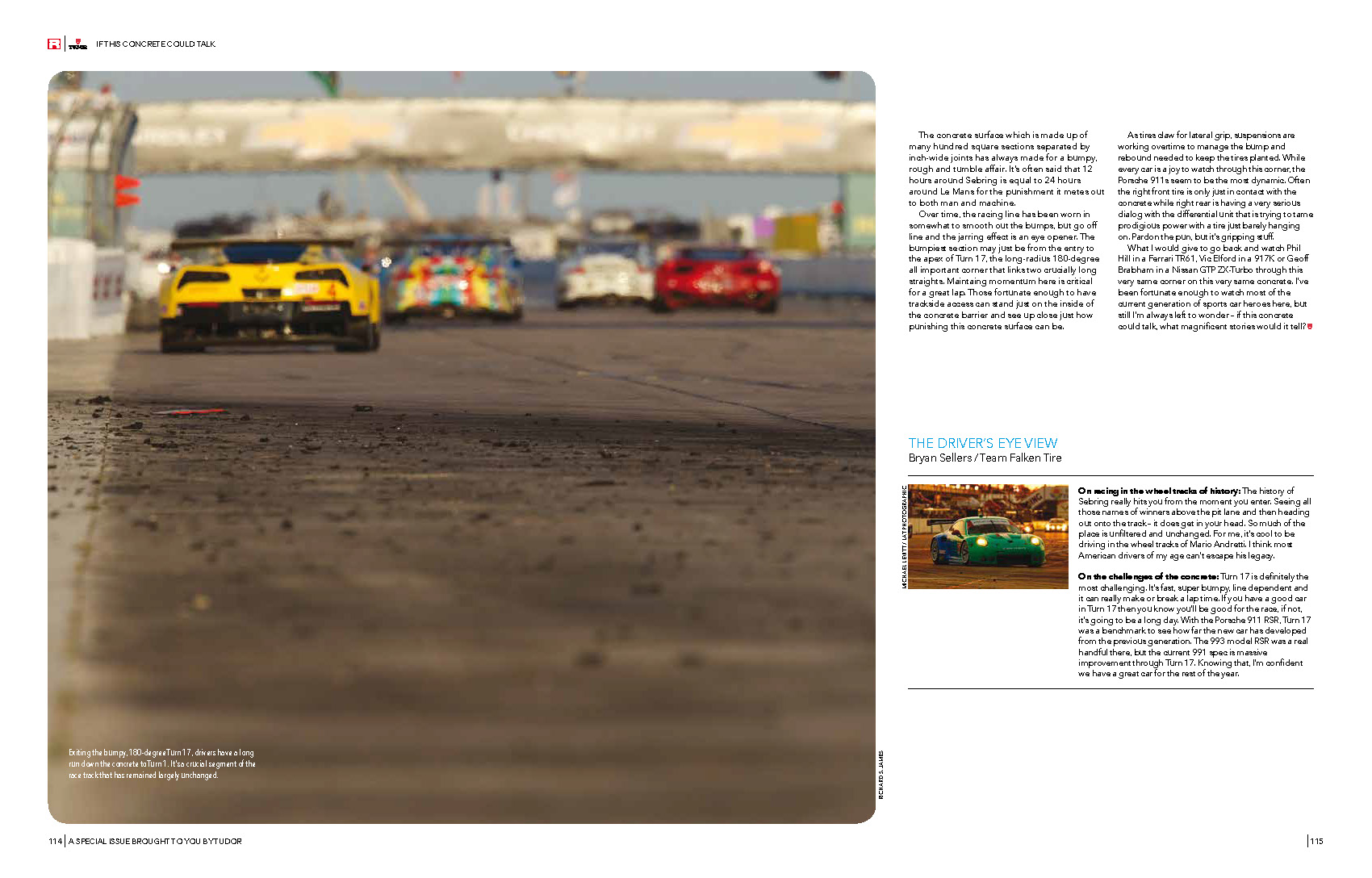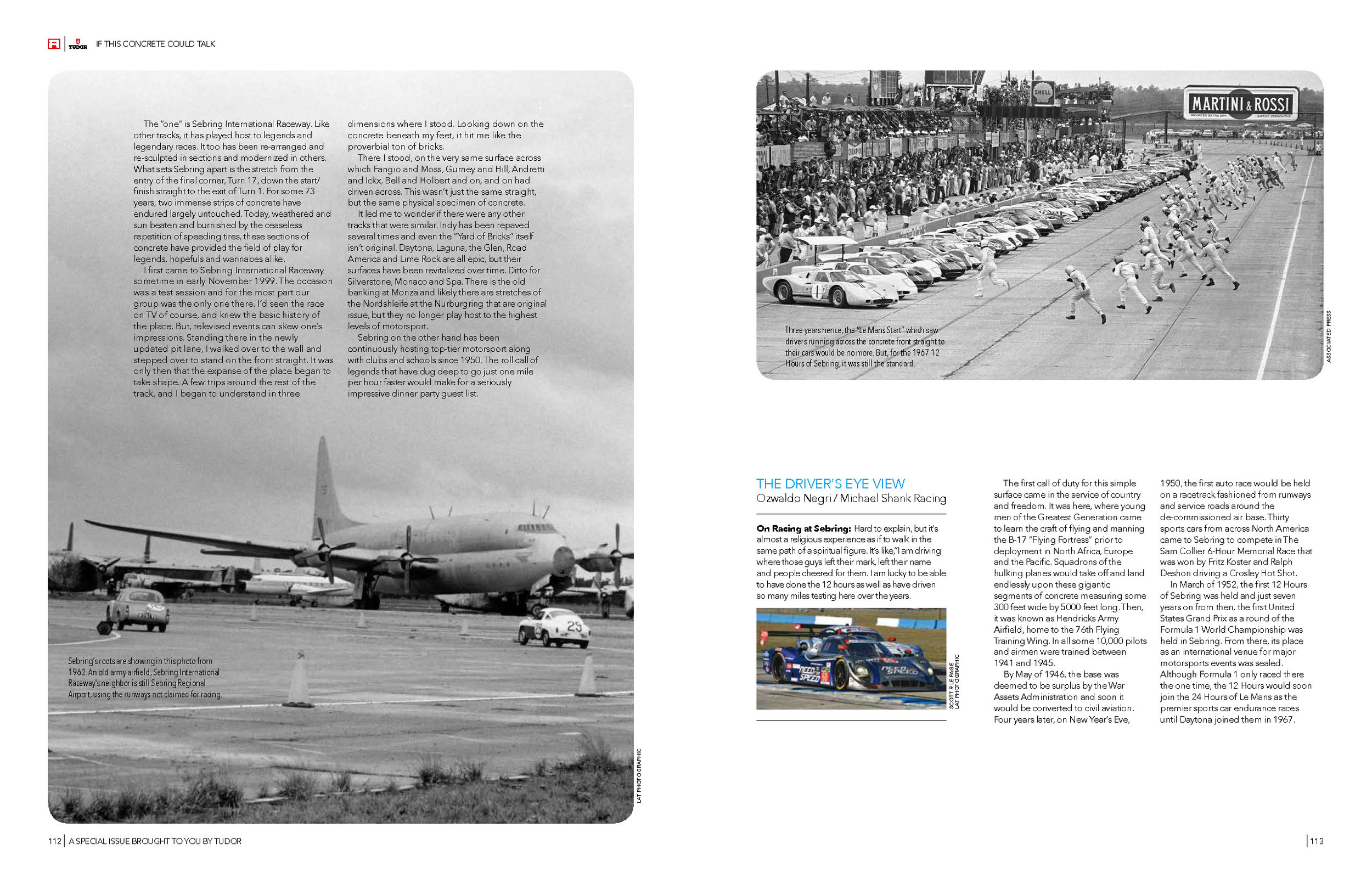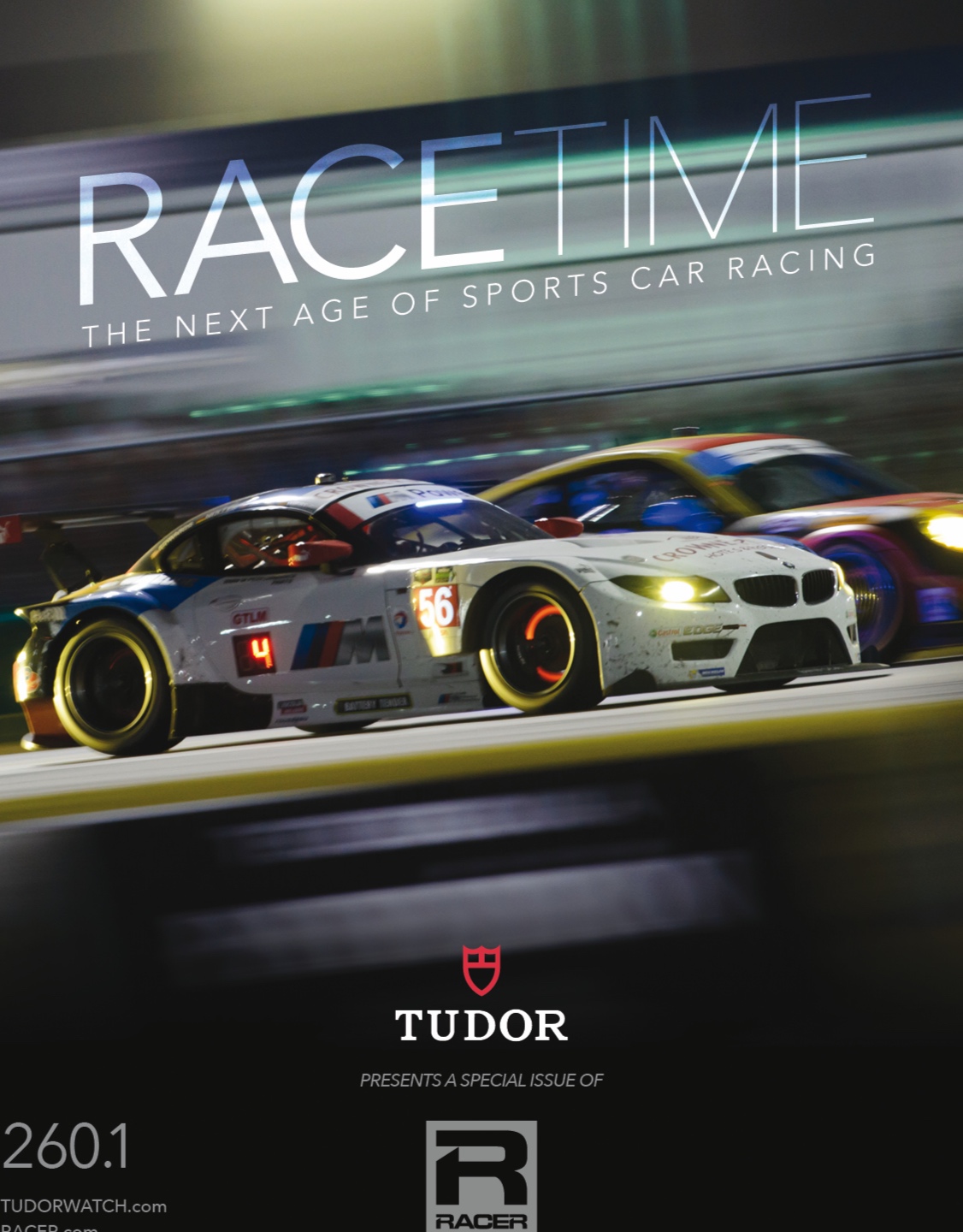
Tudor Watch
[Creative and Editorial Director, Copywriter]
In 2014, Tudor Watch, a sub-brand of Rolex, became the title sponsor of IMSA’s premier race series. To mark the sponsorship and show their commitment, they commissioned RACER Studio to produce a one-off magazine celebrating the beauty of sports car racing past, present and future. As Creative and Editorial Director for the project, I conceived the editorial and stylistic direction as well as edited and contributed to the text. The magazine was intended to resonate with both endemic and non-endemic audiences. As a result, Tudor distributed a significant portion of the magazine’s print run to jewelers around the country so that they could be more well-versed in the Tudor sponsorship activation.

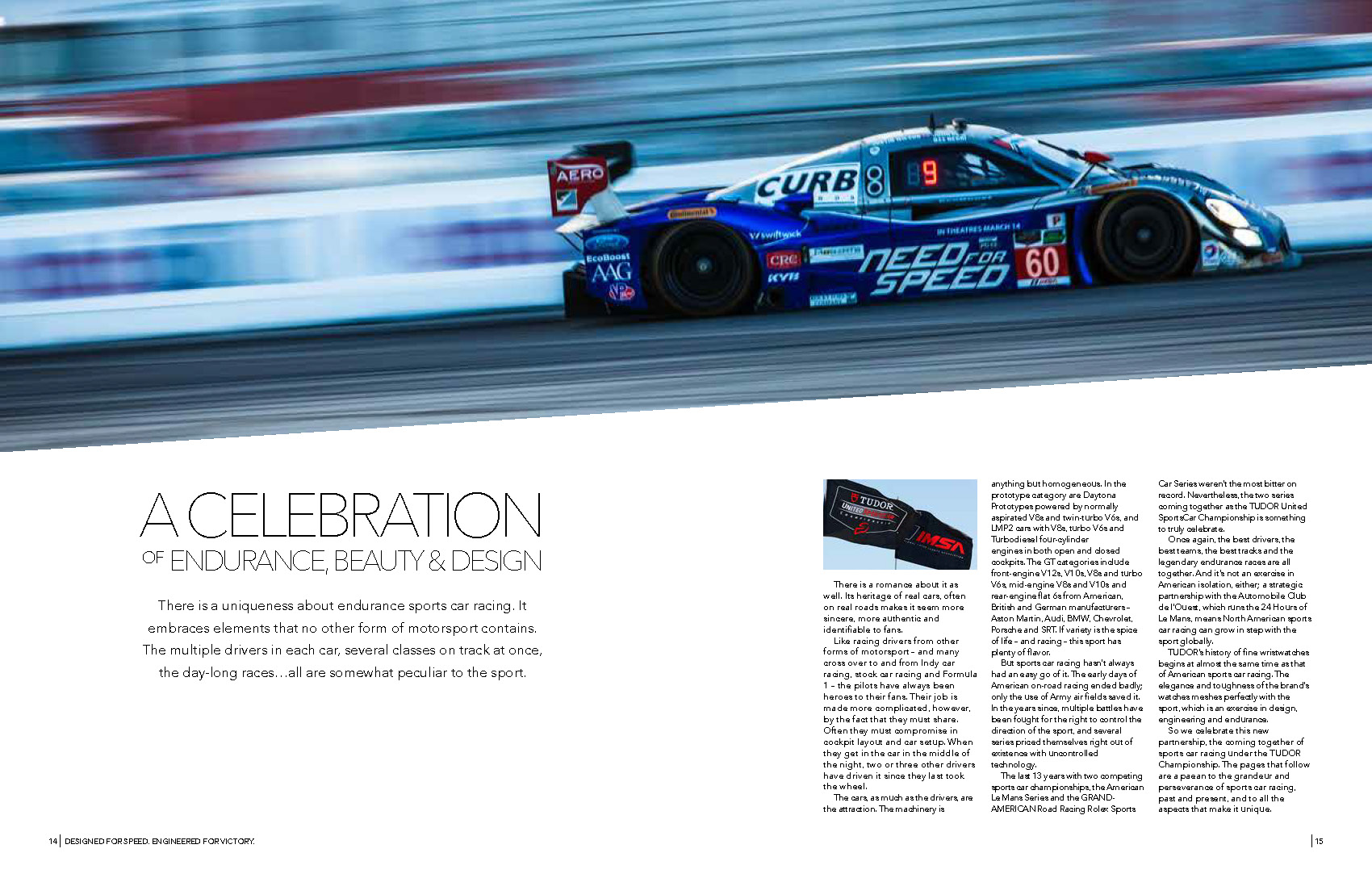
EXCERPT:
A CELEBRATION OF ENDURANCE, BEAUTY & DESIGN
There is a uniqueness about endurance sports car racing. It embraces elements that no other form of motorsport contains. The multiple drivers in each car, several classes on track at once, the day-long races…all are somewhat peculiar to the sport.
There is a romance about it as well. Its heritage of real cars, often on real roads makes it seem more sincere, more authentic and identifiable to fans. Like racing drivers from other forms of motorsport – and many cross over to and from Indy car racing, stock car racing and Formula 1 – the pilots have always been heroes to their fans. Their job is made more complicated, however, by the fact that they must share. Often they must compromise in cockpit layout and car setup. When they get in the car in the middle of the night, two or three other drivers have driven it since they last took the wheel.
TUDOR’s history of fine wristwatches begins at almost the same time as that of American sports car racing. The elegance and toughness of the brand’s watches meshes perfectly with the sport, which is an exercise in design, engineering and endurance.
So we celebrate this new partnership, the coming together of sports car racing under the TUDOR Championship. The pages that follow are a paean to the grandeur and perseverance of sports car racing, past and present, and to all the aspects that make it unique.
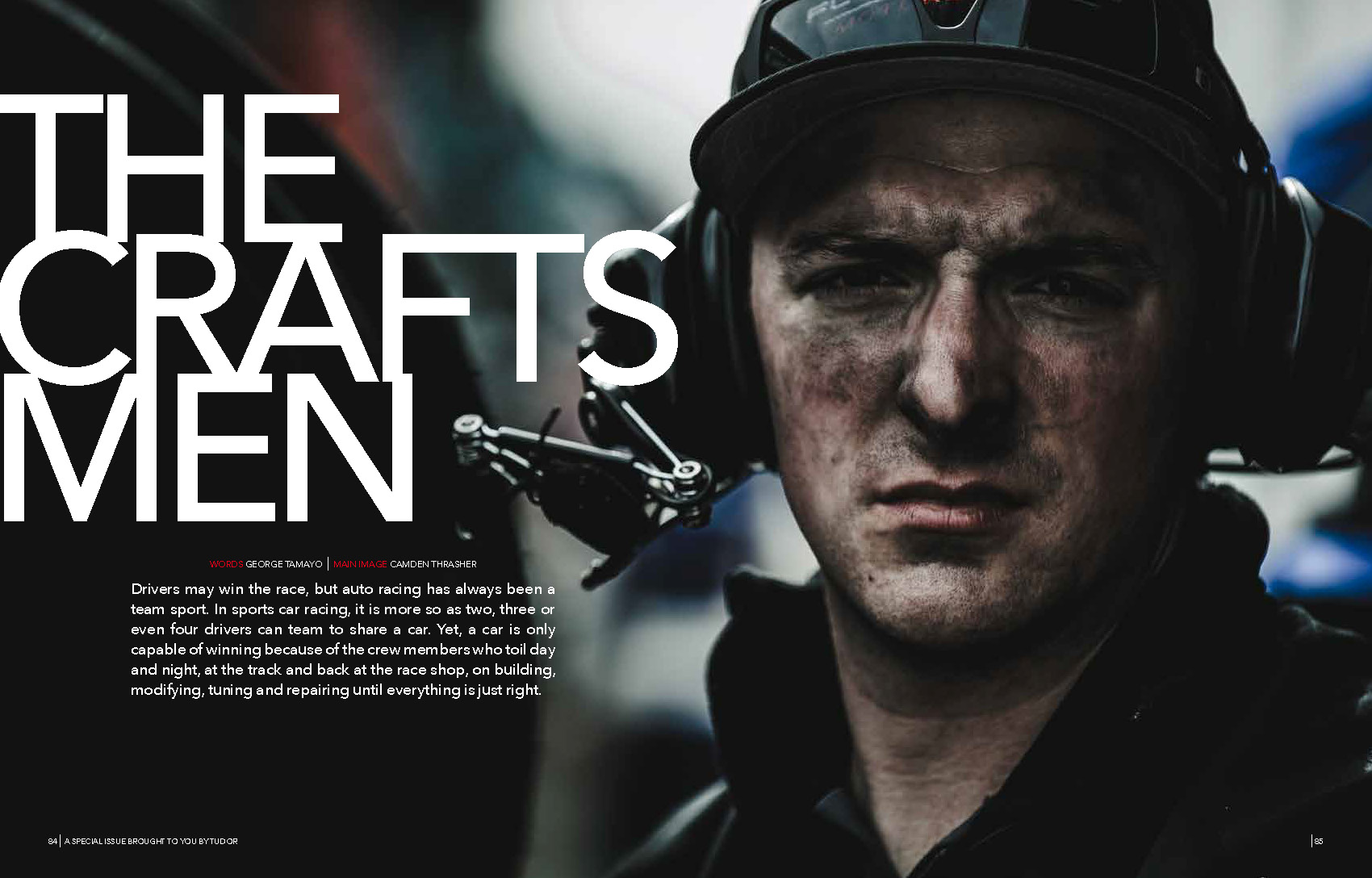
EXCERPT:
THE CRAFTSMEN
Drivers may win the race, but auto racing has always been a team sport. In sports car racing, it is more so as two, three or even four drivers can team to share a car. Yet, a car is only capable of winning because of the crew members who toil day and night, at the track and back at the race shop, on building, modifying, tuning and repairing until everything is just right.
These men, and increasingly women, aren’t just capable of fabricating new parts, troubleshooting issues and rebuilding components. They are craftsmen, who rely on their hands and skills with a wrench, a welder or a caliper to fashion a car that operates within a very narrow set of parameters and tolerances. And, when they put the tools down, craftsmen become athletes. Enduring the challenge of a 24 or 12-hour race just as much, if not more so, than the drivers, the crew must service a racecar on average
once per hour – fitting tires, filling fuel, changing brake pads and often much more in a matter of minutes or less. Races are won and lost in pit lane as much as on the race track.
So here’s to them. Here’s to the Craftsmen.
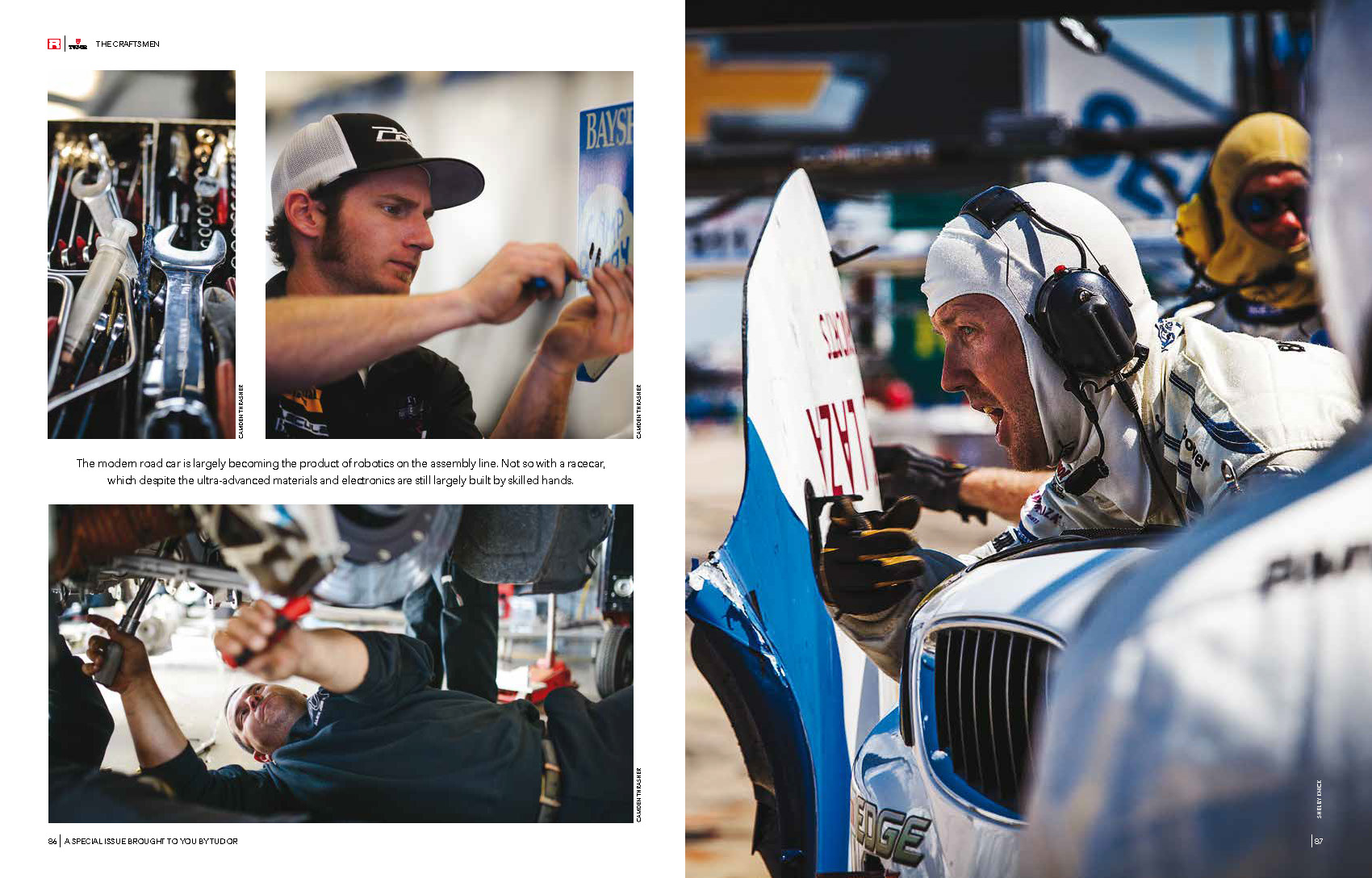
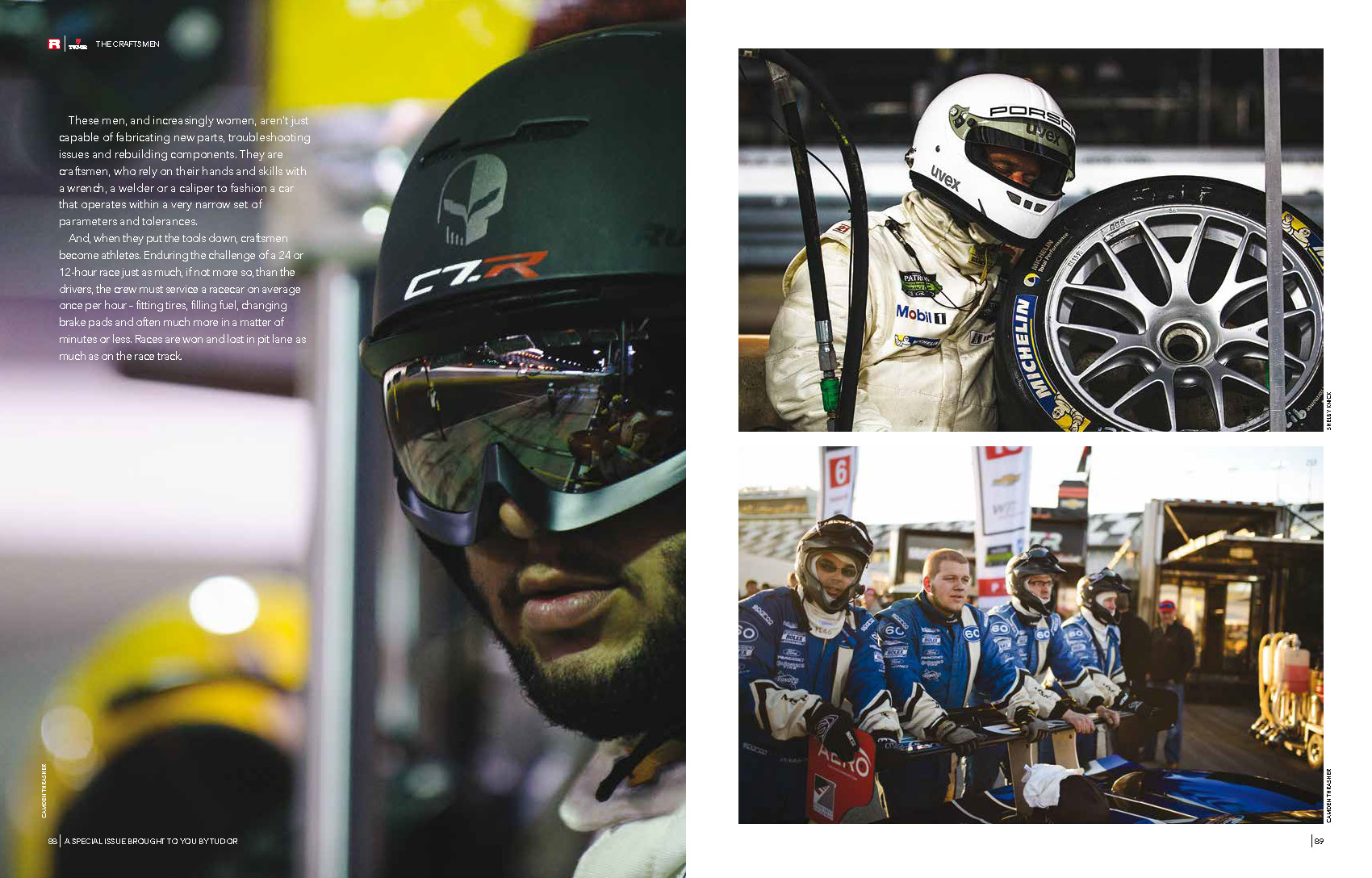
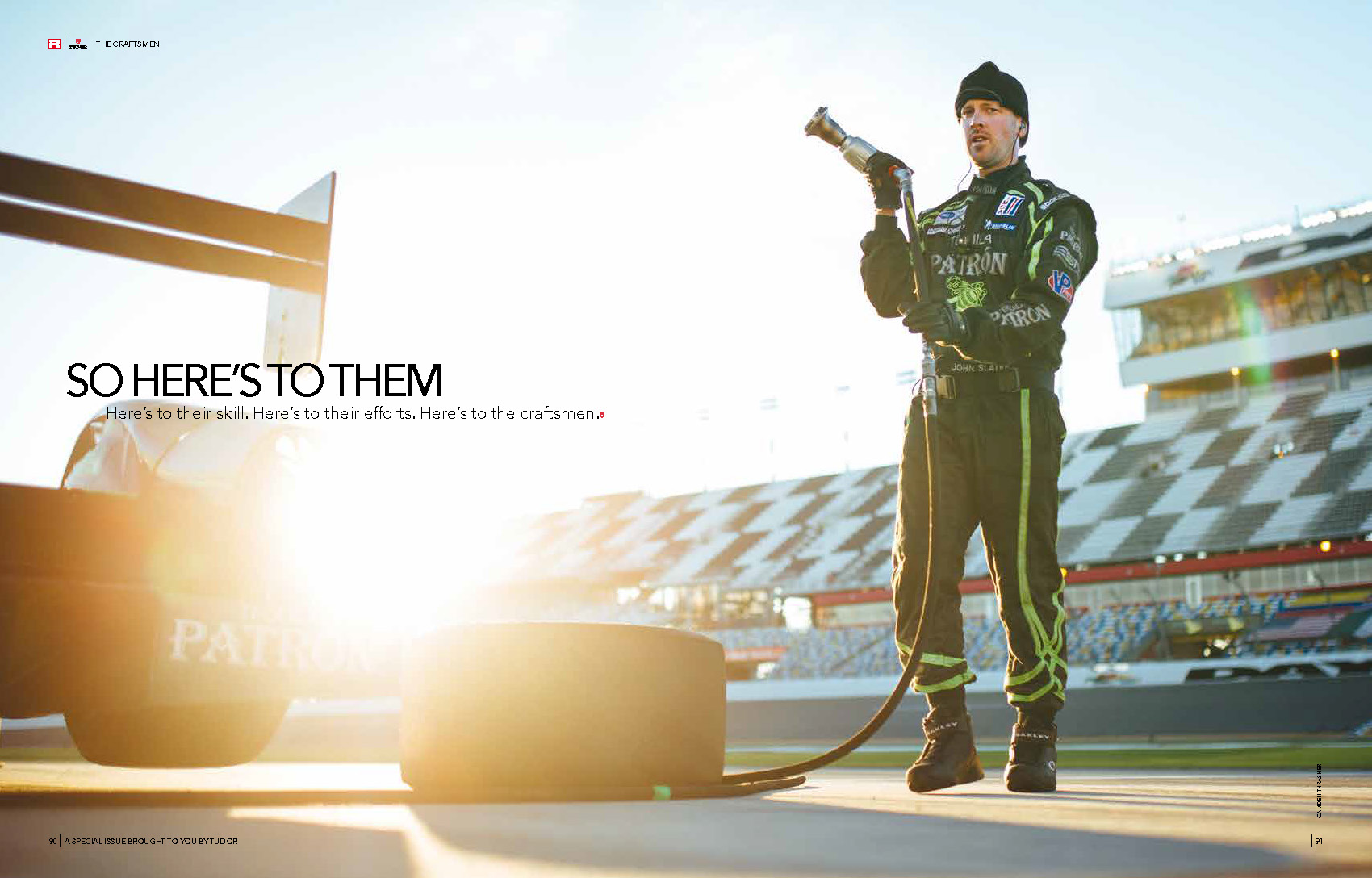
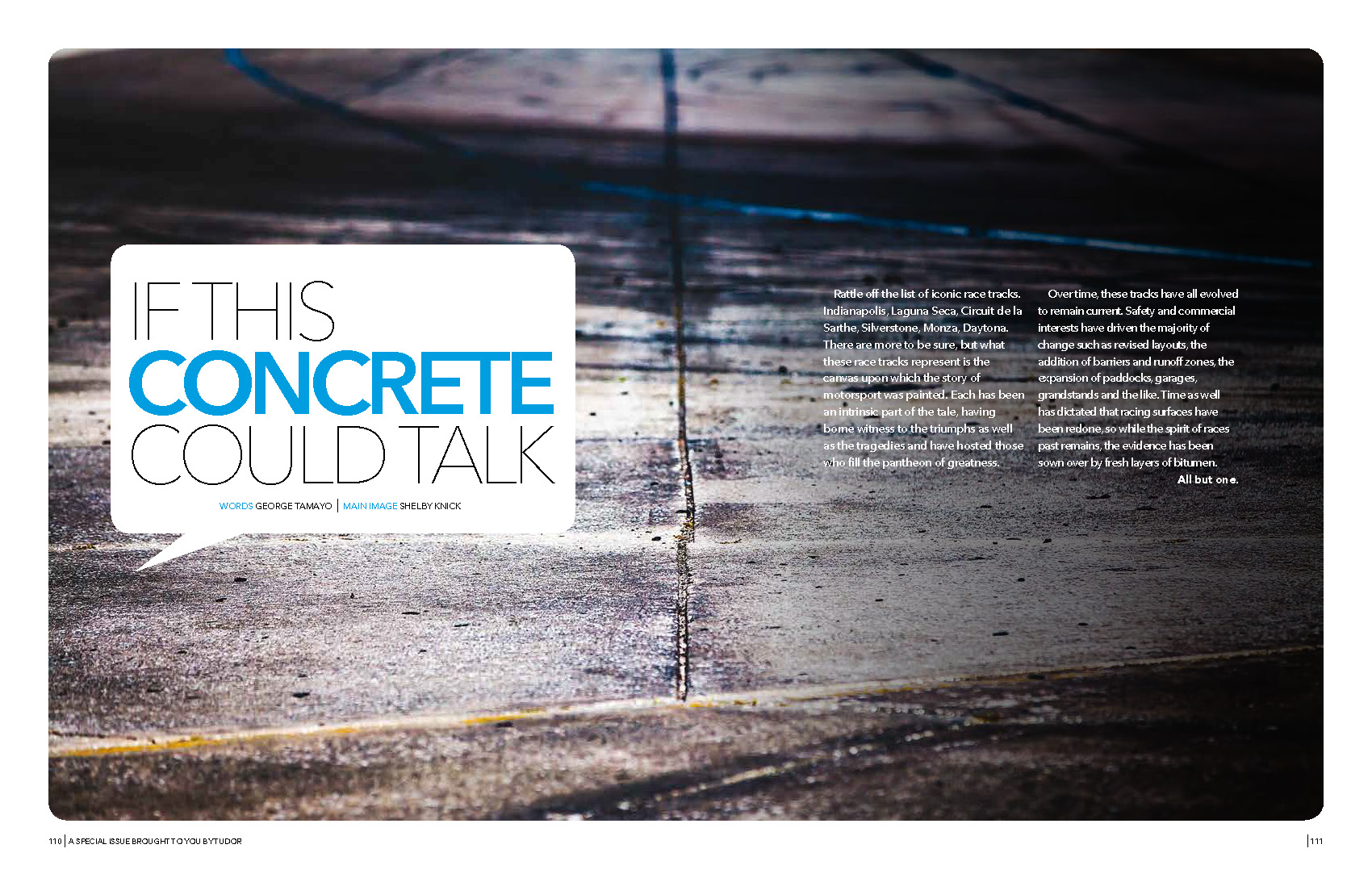
EXCERPT
IF THIS CONCRETE COULD TALK
Rattle off the list of iconic race tracks. Indianapolis, Laguna Seca, Circuit de la Sarthe, Silverstone, Monza, Daytona. There are more to be sure, but what these race tracks represent is the canvas upon which the story of motorsport was painted. Each has been
an intrinsic part of the tale, having borne witness to the triumphs as well as the tragedies and have hosted those who fill the pantheon of greatness.
Over time, these tracks have all evolved to remain current. Safety and commercial interests have driven the majority of change such as revised layouts, the addition of barriers and runoff zones, the expansion of paddocks, garages, grandstands and the like. Time as well has dictated that racing surfaces have been redone, so while the spirit of races past remains, the evidence has been sown over by fresh layers of bitumen.
All but one.
The “one” is Sebring International Raceway. Like other tracks, it has played host to legends and legendary races. It too has been re-arranged and re-sculpted in sections and modernized in others. What sets Sebring apart is the stretch from the entry of the final corner, Turn 17, down the start/ finish straight to the exit of Turn 1. For some 73
years, two immense strips of concrete have endured largely untouched. Today, weathered and sun beaten and burnished by the ceaseless repetition of speeding tires, these sections of concrete have provided the field of play for legends, hopefuls and wannabes alike.
